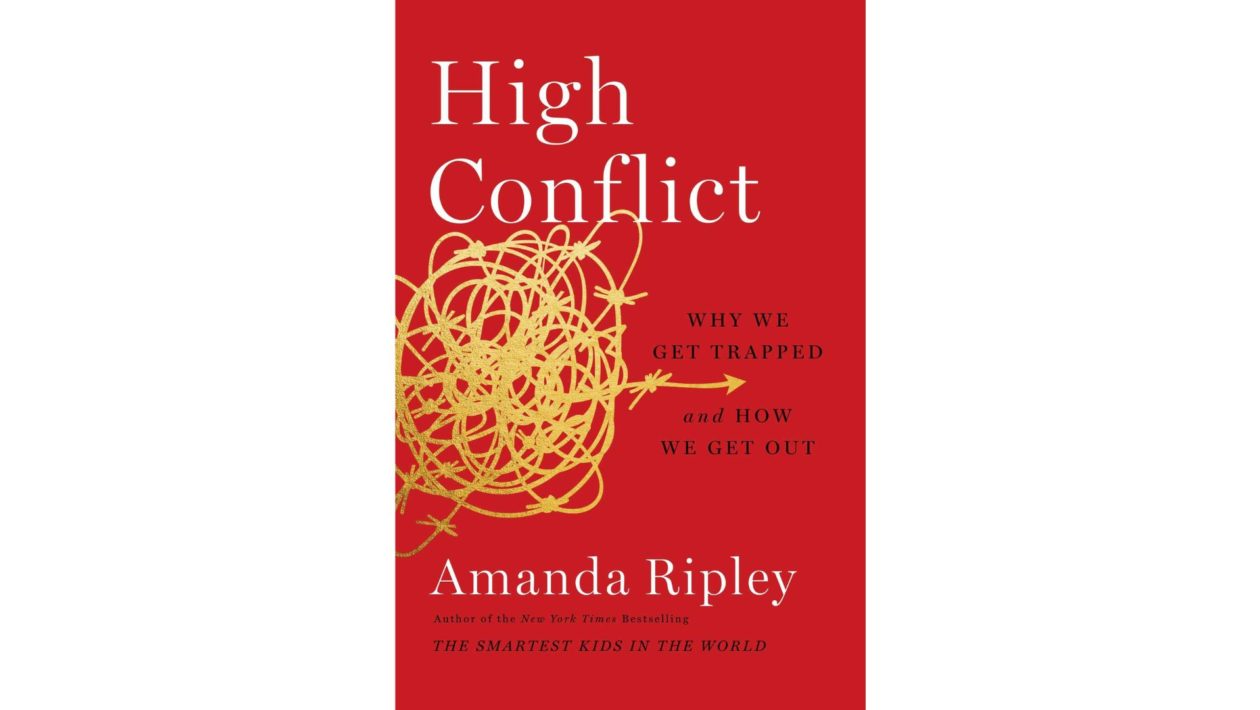By Amanda Ripley
New York: Simon and Schuster (2021) Kindle edition, 363 pages
Reviewed by GEERT TAP
Life is filled with mysterious forces that shape each one of us. Conflict is one of those forces and can be divided into two subsections. These are known as “good conflict,” which is a force that pushes us to be better people, and “high conflict,” which happens when conflict clarifies into a good-versus-evil kind of feud, a feeling of “us versus them.”
Conflict is inevitable. We humans need conflict in order to help us process problems and circumstances that confront us. But when these translate into high conflict, our views narrow, and we tend to become more intolerant to change or difference. Once we are angered, regarding “the other” as hateful, we lose the will to try to understand them. The writer argues that we are all connected and therefore able to and called to adapt. In case of conflict, we must ask ourselves if it is possible to honor the relationship and search for mediation instead of confrontation. High conflict is a system we desperately need to recognize and then deal with if we are to live in harmony with ourselves and with others.
To understand the intricate development of our emotions, especially the damage high conflict brings to us personally and as a community, Ripley introduces us to a variety of leaders from around the globe, sharing their experiences in dealing with conflicts. By describing the experiences of Gary Friedman, a divorce lawyer, the author builds on her thesis, which is about respect for the other. Through Gary’s interaction with clients, he learned that when people feel understood, they begin to trust the other person to dive a little deeper. We all want to feel that we have been heard when it comes to differences in opinions. Gary’s story of high conflict within his direct community in Muir Beach, California, creates the case study that the author uses to make the point for this book.
In Los Angeles, natural asphalt has been bubbling up from below the ground’s surface since the last Ice Age. At that time, the La Brea Tar Pits most likely attracted large creatures who got trapped, attracting predators who, in turn, also got trapped, resulting in a mass grave of thousands of well-preserved mammals. High conflict can act like our own Tar Pits, creating a situation where we, as leaders within religious communities, can become entrapped. Any leader can be drawn into conflict traps and soon find themselves losing sight of what really matters, which is the relationship with the other. Ripley argues that true relationships make it harder to disregard the other and see them as less than human—if we chose to engage, that is.
As we search for conflict resolution, it is important that we apply the following steps as presented by the author. First, as we meet to resolve the issue at hand, we ought to regard each other as equals. Second, it helps to have a respected authority representing both parties and showing support equally. Third, high conflict can be tackled if the solution is not mere words but also includes people who are working together on the problem at hand. And finally, everyone present should be committed to a shared goal, whatever that goal is.
What all the stories in High Conflict have in common is the distortion of identity. Each individual in the end had to learn to adopt a new identity, one that would see the other as equal and precious. As we deal with conflicts experienced with our fellows, the way to a healthier relationship and coexistence lies within the ability to see and hear the other and make them feel like they belong; the writer refers to this as “rehumanizing.” We ought to get curious about the other person or group.
Practical steps are presented in the appendixes. To shift out of high conflicts, Ripley recommends we study the understory first and investigate what the conflict truly is about. Then, minimize the binary group thinking in order to see each other as “we” or as many groups.
Now, try to recognize the “fire starters”—those who love conflict and are not interested in finding a common goal. Through it all, use the option of time and space. As conflict arises, take a deep breath, go for a long walk, and then regroup and start with an apology. Always use questions to help each other to be understood and to understand.
Ripley’s work is highly practical and should be a compulsory read for any leader who’s been given the opportunity to guide and inspire their team or organization in recognizing the difference between good conflict and high conflict. The writer expresses her thoughts in ways with which we all can identify. We can visualize the circumstances, even asking ourselves, “What would I do?” in the given situation.
At beginning of the book, the author states that we all struggle with high conflicts. But in her closing, she writes that it is feasible to shift out of high conflict. We are capable of rehumanizing and recategorizing our opponents, reviving curiosity, and wondering about the others. As individuals, and even communities, we can stop the vicious circles of anger and blame if we want to. If we do, we can transform our world and that of our fellow humans.

